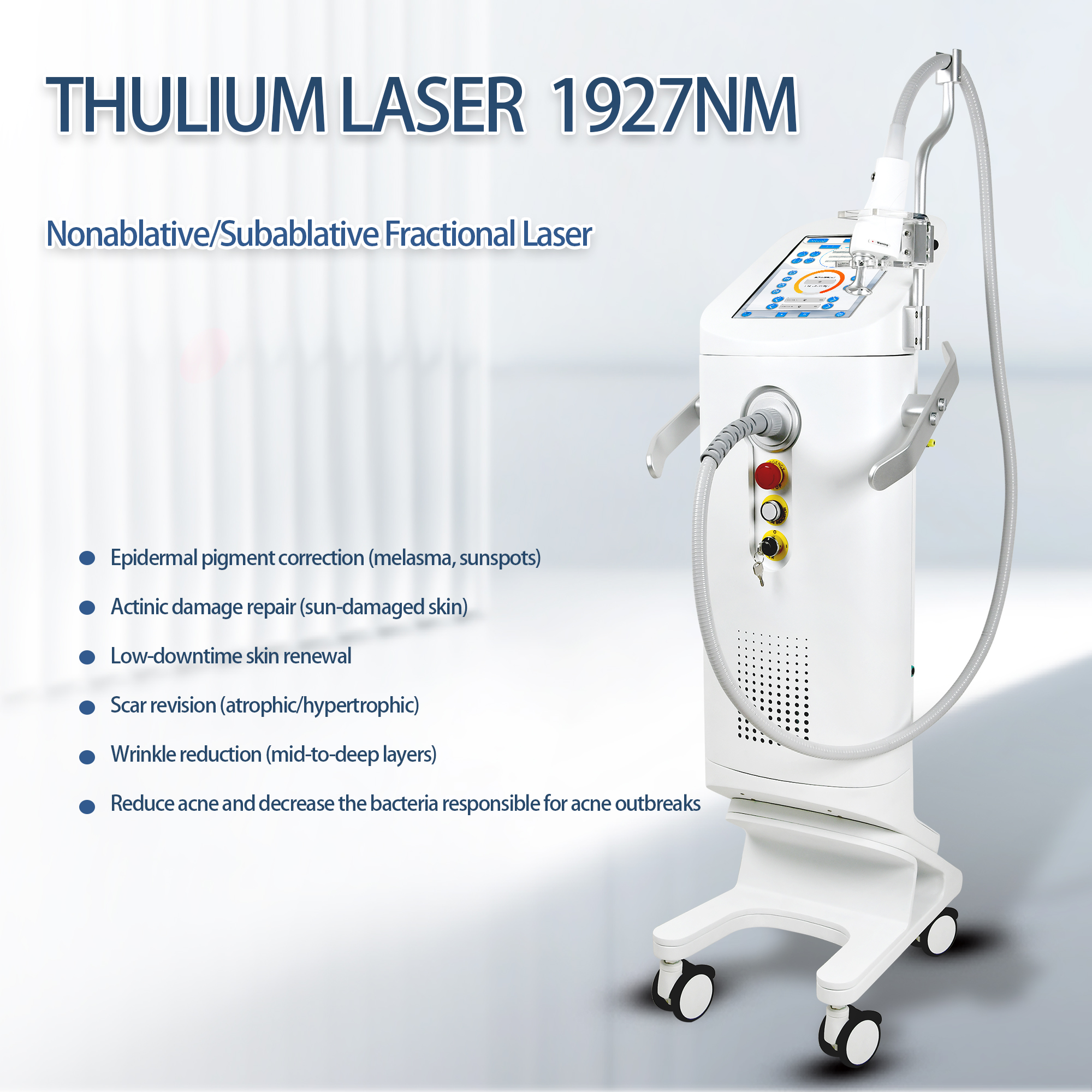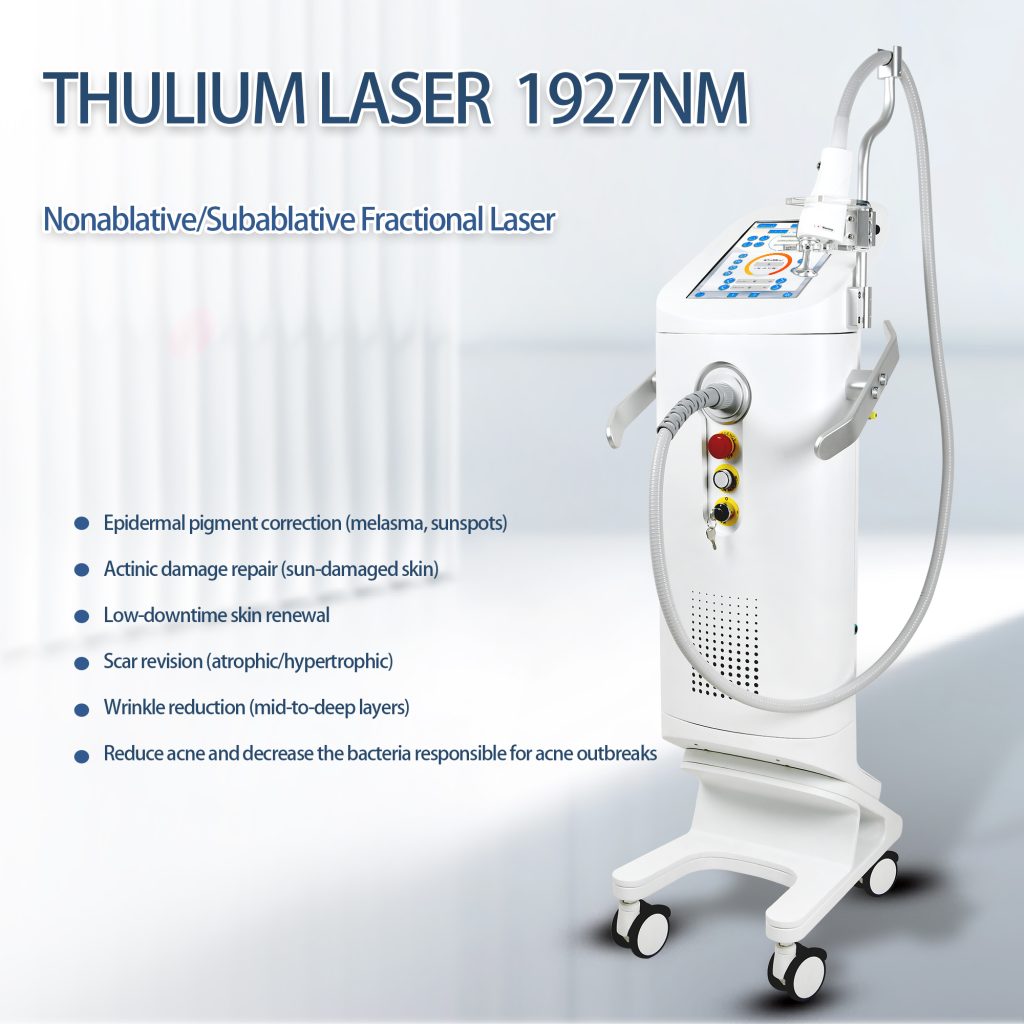What should you pay attention to when buying a Diode Laser?
November 07, 2025Thulium Laser in Medical Practice: Indications and Contraindications
June 23,2025
Introduction
The thulium-doped yttrium aluminum garnet (Tm:YAG) laser, operating at a wavelength of 2013 nm, has gained significant attention in various medical specialties. Its wavelength coincides with the absorption peak of water molecules, making it particularly effective for procedures requiring precise tissue ablation with minimal thermal damage to surrounding structures.

Clinical Indications
Urological Applications
- Benign Prostatic Hyperplasia (BPH)
- Thulium laser enucleation of the prostate (ThuLEP) has become a gold standard treatment
- Demonstrates superior hemostatic properties compared to traditional TURP
- Effective for prostates of all sizes with shorter catheterization times
- Urolithiasis
- Highly efficient for stone fragmentation (thulium fiber laser)
- Particularly effective for hard stones like calcium oxalate monohydrate
- Allows dusting technique with minimal retropulsion
- Urothelial Tumors
- Precise tumor ablation with excellent visual control
- Reduced risk of bladder perforation compared to conventional resection
ENT and Airway Surgery
- Laryngeal Procedures
- Phonosurgery for vocal cord lesions
- Precise excision of laryngeal papillomas
- Minimal thermal spread protects vocal function
- Sleep Apnea Surgery
- Tonsillectomy and uvulopalatoplasty
- Reduced postoperative pain compared to electrocautery
Dermatology Applications
- Skin Resurfacing
- Fractional thulium lasers for photoaging treatment
- Stimulates collagen production with minimal downtime
- Vascular Lesions
- Effective for telangiectasias and rosacea
- Better absorption by oxyhemoglobin than some other laser types
Other Surgical Applications
- Gynecology: Precise vaginal rejuvenation procedures
- Neurosurgery: Selective tumor ablation
- Dentistry: Hard tissue applications including caries removal

Contraindications and Safety Considerations
Absolute Contraindications
- Pacemaker Dependency
- Potential electromagnetic interference risks
- Requires cardiology consultation preoperatively
- Active Infection at Treatment Site
- Risk of spreading infection through aerosolization
- Requires antibiotic treatment prior to procedure
- Malignant Lesions Without Proper Diagnosis
- Tissue vaporization may compromise pathological examination
- Requires biopsy confirmation before ablation
Relative Contraindications
- Coagulation Disorders
- Although thulium laser provides good hemostasis
- Requires careful evaluation of bleeding risk
- Pregnancy
- Lack of sufficient safety data for fetal effects
- Elective procedures should be postponed
- Photosensitivity Disorders
- Potential for exaggerated tissue response
- Requires patch testing before full treatment
Safety Protocols
- Eye Protection
- Mandatory use of wavelength-specific goggles
- Both patient and staff require protection
- Smoke Evacuation
- Necessary to remove laser plume containing cellular debris
- Special filters required for potential viral particles
- Parameter Selection
- Proper power settings based on tissue type
- Continuous irrigation needed for some procedures
Comparative Advantages
- Precision
- Shallow optical penetration depth (0.2-0.3 mm)
- Excellent for delicate anatomical structures
- Versatility
- Effective for both soft and hard tissues
- Multiple delivery systems (fiberoptic, articulated arms)
- Hemostasis
- Superior coagulation profile to holmium laser
- Minimal charring at incision sites
Future Directions
Ongoing research explores expanded applications in:
- Minimally invasive cancer surgeries
- Refractive eye surgery
- Novel endoscopic applications
Conclusion
The thulium laser represents a significant advancement in surgical technology, offering surgeons a tool that combines precision, versatility, and safety. Proper understanding of its indications and contraindications is essential for optimal clinical outcomes.